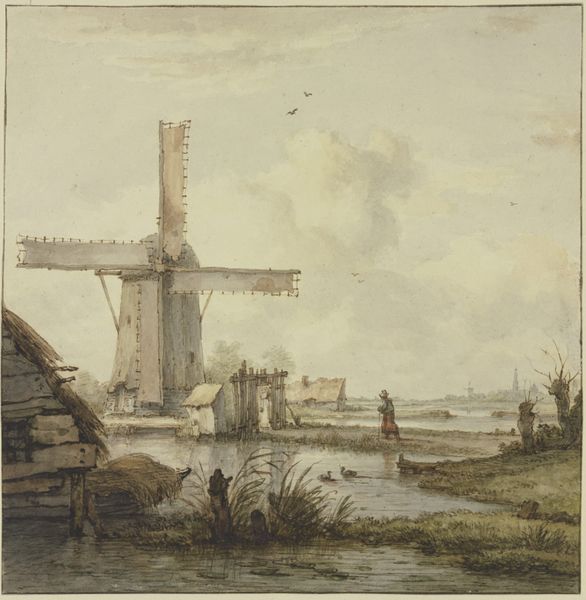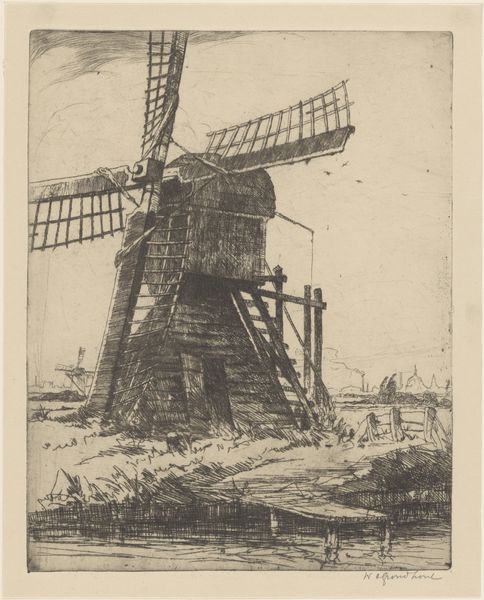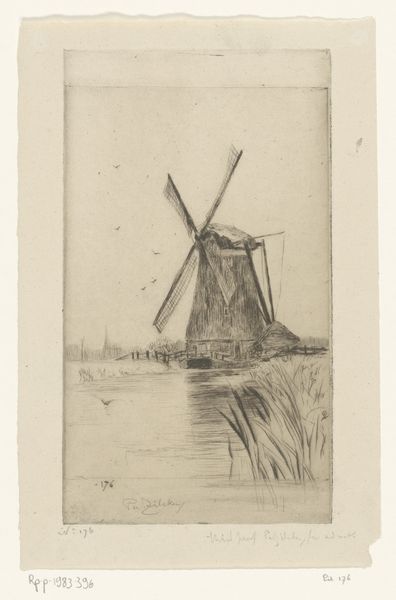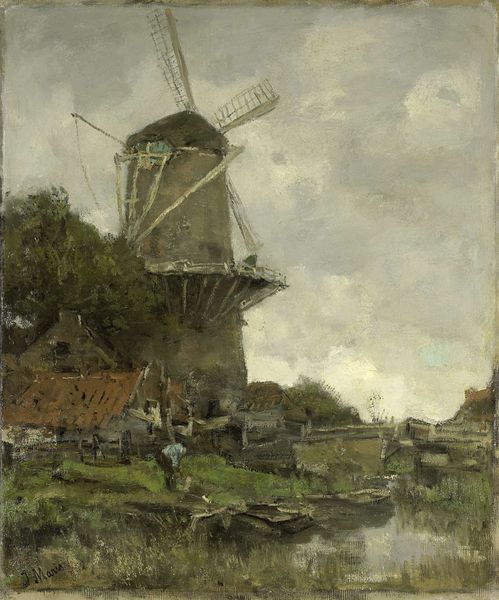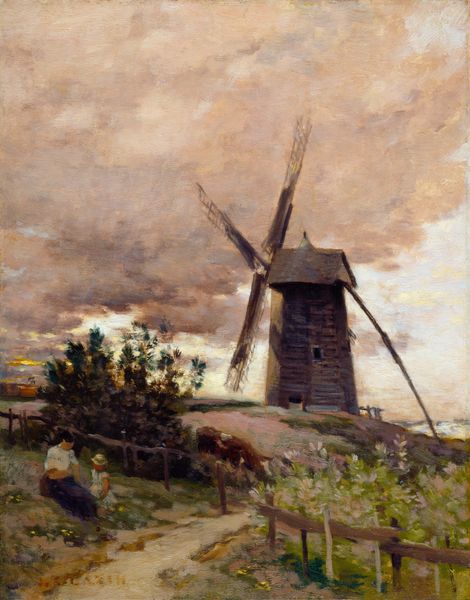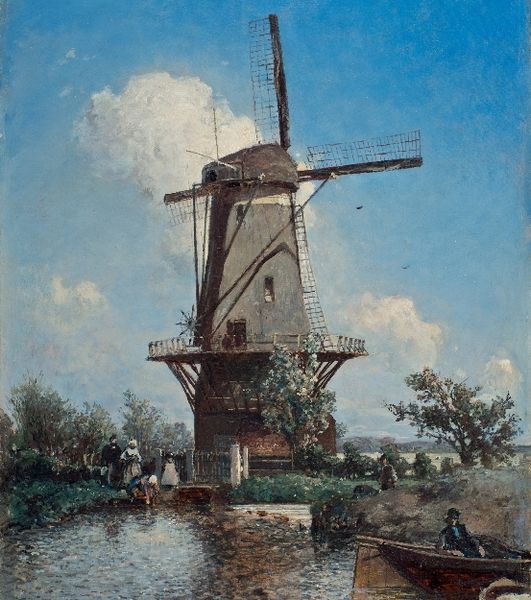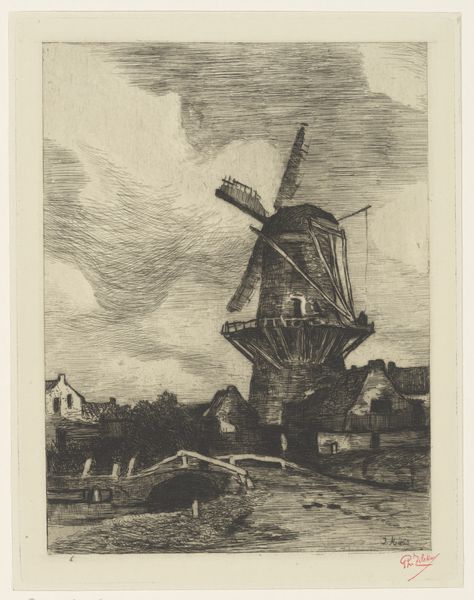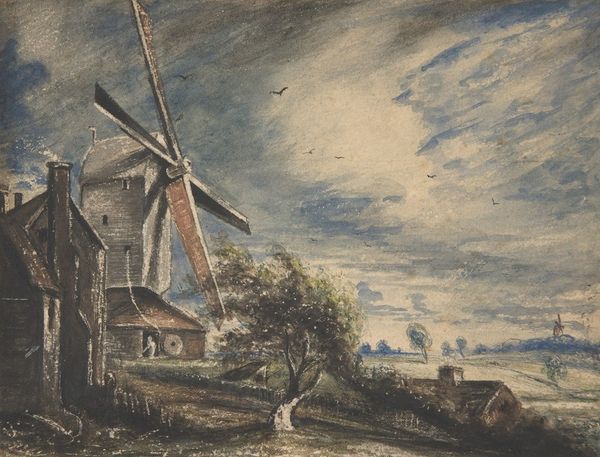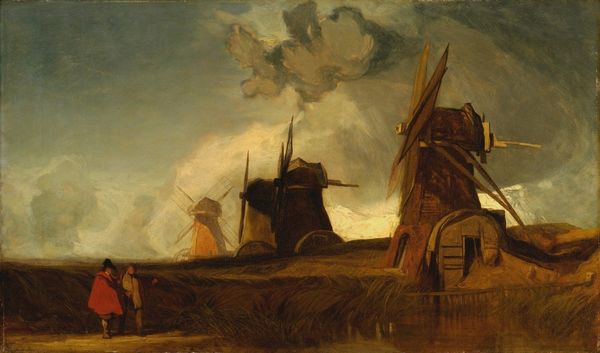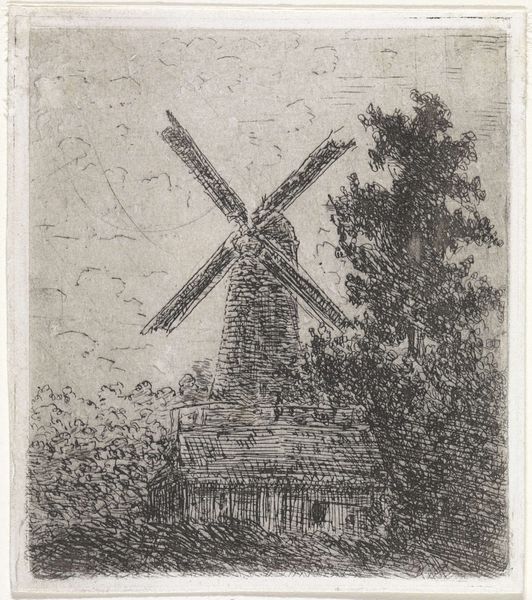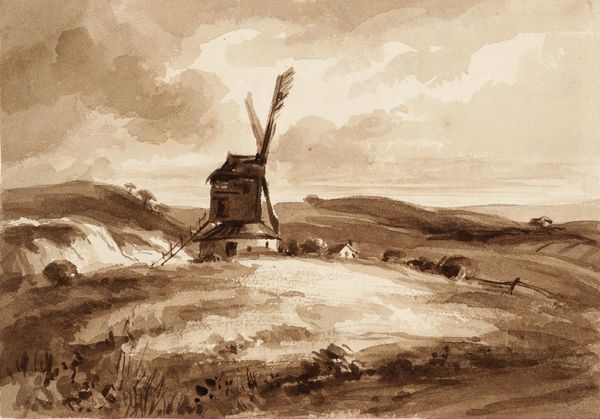
drawing
#
drawing
#
charcoal drawing
#
possibly oil pastel
#
charcoal art
#
oil painting
#
underpainting
#
pastel chalk drawing
#
painting painterly
#
watercolour bleed
#
watercolour illustration
#
watercolor
Dimensions: overall: 46.7 x 36.5 cm (18 3/8 x 14 3/8 in.)
Copyright: National Gallery of Art: CC0 1.0
Editor: This is Constant Troyon's "A Windmill against a Cloudy Sky," created sometime between 1845 and 1850, possibly using charcoal and perhaps some pastel. The textures seem almost tactile. What do you see in this piece, particularly concerning the relationship between labor and landscape? Curator: I see a compelling intersection of industrial development and rural life rendered through accessible materials. Troyon uses charcoal, a readily available and inexpensive medium, to depict the windmill, a machine born from the necessity to harness natural power for labor. Notice how the artist doesn't romanticize the scene. Instead, there's an emphasis on the physical presence of the mill—the labor it represents. Editor: I hadn’t thought about charcoal as a conscious choice tied to labor, more as just a practical one! What does that suggest about the social context in which it was made? Curator: Exactly! Consider that Troyon’s work emerges during a period of industrial expansion, challenging artistic boundaries. By depicting this industrial landscape using these more quotidian materials, Troyon almost democratizes the subject, drawing attention to the lives and labor that fuel the advancements of the period. What do you make of the handling of the sky and surrounding land in contrast to the mill? Editor: It almost seems to swallow the mill, as if nature is going to persist longer than this...machine. And by making visible all these traces of the making, emphasizing that the drawing itself has a life, that its value is tied to its process rather than its perfection. Curator: Precisely! The atmospheric perspective serves not only as a backdrop but almost as a commentary on the ephemerality of human endeavors contrasted against nature's endurance. The medium's directness itself becomes the message. This artwork gives us insight to the artist’s critical understanding of materials and labor, prompting further questioning about art’s function in times of shifting economies. Editor: It really opens up a new way of viewing landscapes and considering the art making process, as both intentional and intrinsically connected to cultural production.
Comments
No comments
Be the first to comment and join the conversation on the ultimate creative platform.
